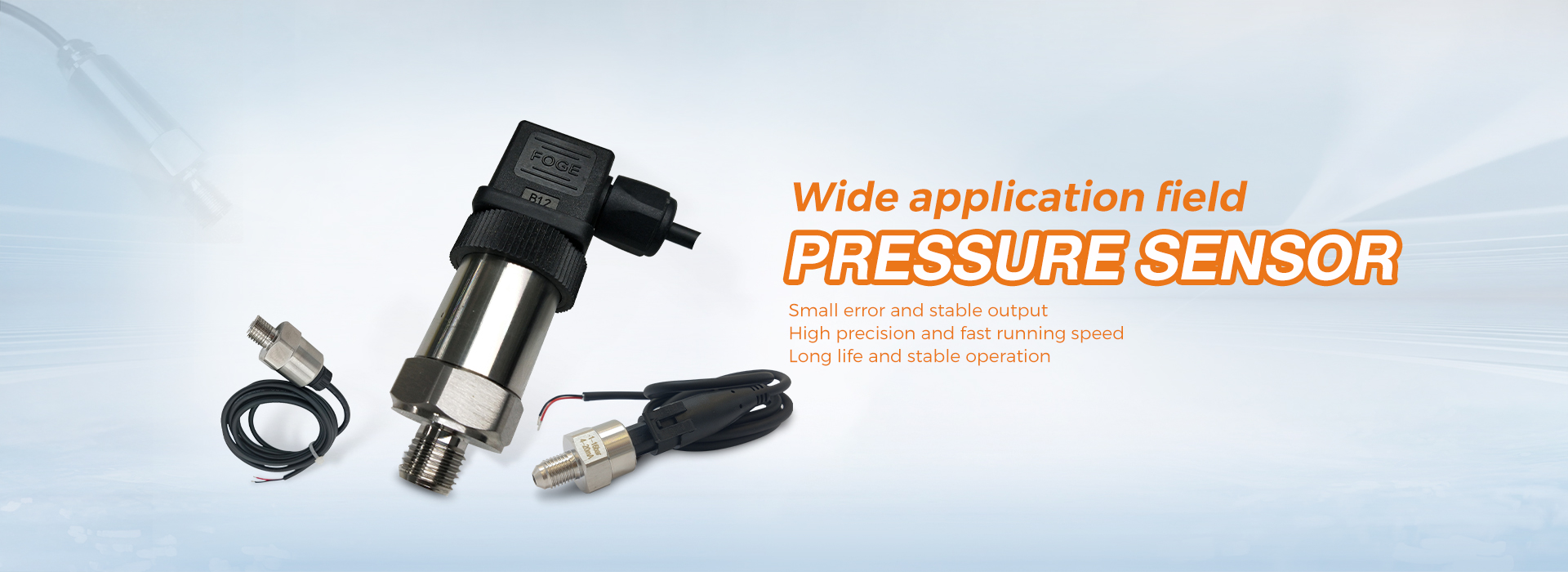1. How to select a pressure transmitter? Firstly, it is necessary to confirm what kind of pressure to measure
Firstly, determine the maximum value of the measured pressure in the system. Generally, it is necessary to choose a transmitter with a pressure range that is about 1.5 times larger than the maximum value. This is mainly due to the presence of peaks and continuous irregular fluctuations in many systems, especially in water pressure measurement and processing. These instantaneous peaks can damage pressure sensors. Continuous high pressure values or slightly exceeding the calibrated value of the transmitter will shorten the lifespan of the sensor, and doing so will also lead to a decrease in accuracy. So a buffer can be used to reduce pressure burrs, but this will reduce the response speed of the sensor. So when choosing a transmitter, it is important to fully consider the pressure range, accuracy, and stability.
2. What kind of pressure medium
Will viscous liquids and mud clog the pressure interface, and will solvents or corrosive substances damage the materials in direct contact with these media in the transmitter. The above factors will determine whether to choose a direct isolation membrane and materials that come into direct contact with the medium.
3. How much accuracy is required for a pressure transmitter (pressure sensor accuracy calculation)
The factors that determine accuracy include nonlinearity, hysteresis, non repeatability, temperature, zero offset scale, and the influence of temperature. But mainly due to nonlinearity, hysteresis, non repeatability, the higher the accuracy, the higher the price.
4. Temperature range of pressure transmitter
Usually, a transmitter will calibrate two temperature ranges, one of which is the normal operating temperature and the other is the temperature compensation range. The normal operating temperature range refers to the temperature range of the transmitter when it is not damaged during operation. When it exceeds the temperature compensation range, it may not meet the performance indicators of its application.
The temperature compensation range is a typical range smaller than the working temperature range. Working within this range, the transmitter will definitely achieve its expected performance indicators. The temperature change affects its output from two aspects: zero drift and full range output. For example,+/- X%/℃ of full scale,+/- X%/℃ of reading,+/- X% of full scale when exceeding the temperature range, and+/- X% of reading when within the temperature compensation range. Without these parameters, it can lead to uncertainty in use. Is the change in transmitter output caused by pressure changes or temperature changes. The temperature effect is a complex part of understanding how to use a transmitter.
5. What output signal does a pressure transmitter need to obtain
The choice of digital output for mV, V, mA, and frequency depends on various factors, including the distance between the transmitter and the system controller or display, the presence of “noise” or other electronic interference signals, the need for amplifiers, and the location of the amplifiers. For many OEM devices with short distances between transmitters and controllers, using mA output transmitters is an economical and effective solution.
If it is necessary to amplify the output signal, it is recommended to use a transmitter with built-in amplification. For long-distance transmission or strong electronic interference signals, it is better to use mA level output or frequency output.
If in an environment with high RFI or EMI indicators, in addition to choosing mA or frequency output, special protection or filters should also be considered.
6. What excitation voltage should be selected for pressure transmitters
The type of output signal determines what excitation voltage to choose. Many transmitters have built-in voltage regulation devices, so their power supply voltage range is large. Some transmitters are quantitatively configured and require a stable operating voltage. Therefore, the operating voltage determines whether to use a sensor with a regulator. When selecting a transmitter, a comprehensive consideration should be given to the operating voltage and system cost.
7. Do we need transmitters with interchangeability
Determine if the required transmitter can adapt to multiple usage systems. Generally speaking, this is important, especially for OEM products. Once the product is delivered to the customer, the cost of calibration for the customer is considerable. If the product has good interchangeability, even changing the transmitter used will not affect the overall system performance.
8. The transmitter needs to maintain stability after timeout operation
Most transmitters will experience “drift” after being overworked, so it is necessary to understand the stability of the transmitter before purchasing. This pre work can reduce various troubles that may arise in future use.
9. Packaging of pressure transmitters
The packaging of a transmitter is often overlooked due to its rack, but this will gradually expose its drawbacks in future use. When selecting a transmitter, it is important to consider the future working environment, humidity, installation methods, and whether there will be strong impacts or vibrations.
Post time: Apr-30-2024



